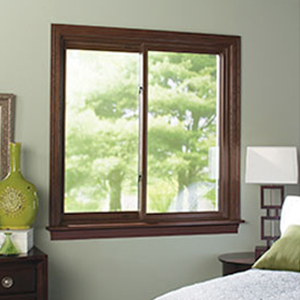Condensation is a sure sign that your home windows need to be replaced.
Windows are an important barrier between the extreme, variable weather conditions outside as well as our calm, consistent home temperatures. Home replacement windows tend to have a fifteen to twenty-year lifespan, so the good news is we do not need to think of changing them too often. But understanding when it's time to replace them can be complicated. You might be tempted to try and hold out for another season if you recognize the warning signs. However changing your home windows currently could assist you expand the life of your entire home and keep you and your family members warm all winter long. Right here are a couple of indicators that your home windows are not ready for the rough winter season this year.
Drafty Residence
As windows age, they begin diminishing, breaking, as well as not closing effectively, allowing air from inside your home to drain. As a result of this, your HEATING AND COOLING system struggles to keep your house at a continuous temperature and also sends your power bills escalating. If your residence is noticeably extra breezy or your electric expenses seem to be rising this succumb to no apparent reason, you may wish to have your home windows checked out.
Tough to Lock
We enjoy having our home windows open when the climate behaves, but they should not be open all of the moment. During the wintertime when we're not home, your windows must be shut in area and locked. Windows with malfunctioning locks is a significant protection threat that need to be fixed asap to maintain your family risk-free. Often the lock can be repaired cheaply, however if the window is having trouble staying open or shut or is dripping air, it might be best to just install a new one.
Condensation Forming
The most significant indicator that you need new windows is when condensation begins to base on the within your home window when it is closed and also locked. This is a measure of a most likely incurable problem and also must be addressed asap to avoid the prospective growth of mold and mildew in the framework, which could infect other locations of your house and also cause major damages when left unattended.
Have you just about had it with your old, breezy home windows?
Is this the year you've made a decision to finally change your home windows? Changing your home windows with new ones features great deals of advantages, consisting of an energy effectiveness boost, better air flow, as well as much better high quality of light in your home. The National Fenestration Rating Council licenses and also classifies windows (as well as doors as well as skylights) on their performance and power performance. When you're buying new windows you'll see these rankings on the NFRC label. In this week's blog, we'll talk about how you can read this label to make certain you're making a notified decision on your brand-new windows.
Warmth Gain as well as Loss
The first 3 buildings on the label pertain to just how the window carries out when it come to heat gain as well as loss. Windows gain and also lose heat in three methods:
Straight conduction with the glass.
Radiation of warm from the sunlight into your home, and also out of the house from items in the house.
Air leakage with and also around the home window.
U-factor
This is "The price at which a window, door, or skylight conducts non-solar heat flow." The takeaway right here is "The lower the U-factor, the extra energy-efficient the home window, door, or skylight."

Solar Warmth Gain Coefficient
The SHGC tells us how much radiation is confessed with the home window as well as released as warmth in the house. The reduced the number, the less warmth is transferred. However, this does not necessarily indicate you want a reduced SHGC. For example, due to the fact that a higher SGHC means the here window enables more heat in, you can allow extra solar warm inside in the wintertime, which could lower your home heating requirements. In this case, the climate you live in will certainly play a significant factor in choosing an SHGC score.
Air Leak
This measures how much air the home window lets in relative to a specific pressure distinction throughout it. The lower the score, the much less air leak.
Sunlight Transmittance
The following 2 ratings gauge just how much light a home window allows right into your home.
Noticeable Transmittance (VT).
This number between 0 as well as 1 measures what fraction of the range of visible light the window lets through. The higher the fraction, the a lot more light the home window will certainly enable. If you intend to use daylighting in your house, you'll desire a greater fraction. If you wish to minimize indoor glare, you could want a lower fraction.
Light-to-Solar Gain.
This number is the proportion between the SHGC and also the VT. "The higher the number, the a lot more light sent without adding too much quantities of warmth.".